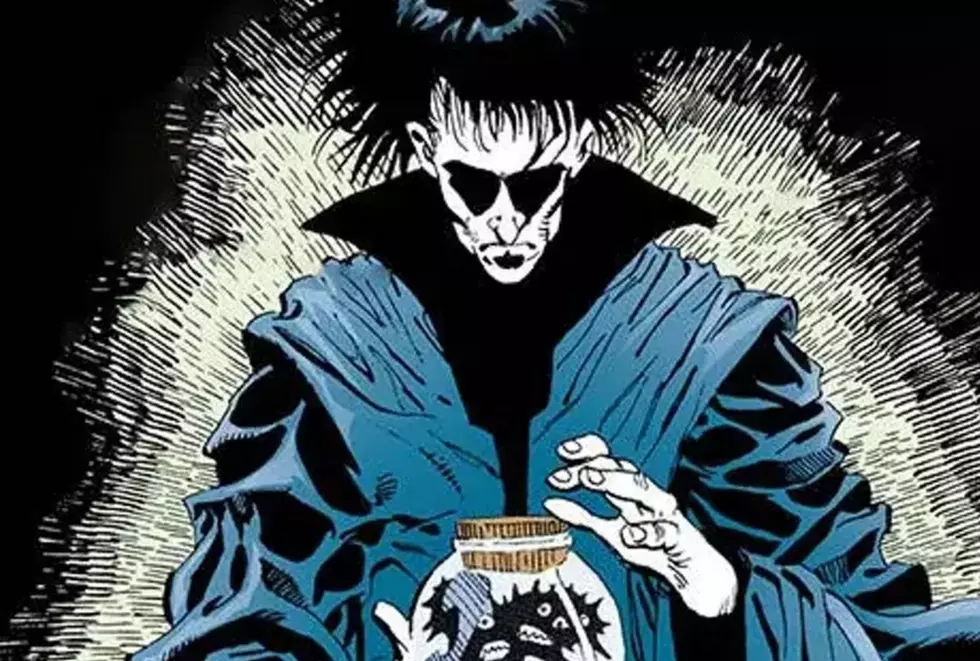
Dramatically Different ‘Absolute Sandman’ Recoloring is Absolutely Necessary

In advance of three new "The Sandman" trade paperbacks coming next month, Vertigo's Graphic Content blog offered a fascinating look behind-the-scenes of "The Absolute Sandman," the remastered edition from which the new softcovers were compiled. Using technology that didn't exist when they were originally created, the first 18 issues of "The Sandman" were completely recolored for the Absolute edition, many by one of the original colorists, Danny Vozzo.
Vertigo has provided some side by side art of both the old and new coloring of the classic series from Neil Gaiman, and the difference is a dramatic one.
While the original coloring certainly has an expressionistic, 1980s charm, it's plain to see that the remastered versions are not only more striking, but also easier to read. The figures at the bottom of the page above, for example, are now individually colored rather than washed in the same ghoulish tone, better showcasing the line work by Sam Kieth and Mike Dringenberg.
The recoloring of "The Sandman's" early issues was a consequence of both changing technology and the book's own success. With each new printing -- and there have been many -- the art looked worse and worse thanks to increasingly better paper and ink. Neil Gaiman elaborated in a 2006 blog post:
The original technology means that with every new printing on cleaner paper with sharper inks, it looks worse. There was never the time or the money to fix anything in the old days, and stuff simply went out as it was, sometimes to the detriment of the story. As things went on, we got to computerise the colour, and the technology gradually made things better. Compare Preludes and Nocturnes to The Kindly Ones, just from a standpoint of colour and you'll see what I mean.

Gaiman also noted the hard work involved in completing the Absolute project, explaining that because most of the original line art had been sold or lost, the recoloring had to be facilitated by old photocopy proofs collected by Gaiman and some of the series artists.

This "Absolute Sandman" endeavor is a helpful demonstration of just what a colorist can bring to a comic book, and how conditional that work is on the nature of the latest technology. As Gaiman noted in the same blog post, they may have to do it all over again in 30 years (but probably not).
More From ComicsAlliance


![When Everything Is Pink, Nothing Is Pink: Sarah Stern On Color And Creativity [Interview]](http://townsquare.media/site/622/files/2017/03/Cindersong-feat.jpg?w=980&q=75)



![Marvel Legends’ Latest Spider-Man Wave Builds a Dream of a Sandman Figure [Review]](http://townsquare.media/site/622/files/2017/03/IMG_1721.jpg?w=980&q=75)
![Bill Sienkiewicz Provides FOC Variant Cover For ‘American Gods: Shadows’ #2 [Exclusive]](http://townsquare.media/site/622/files/2017/03/AMGODS0.png?w=980&q=75)

